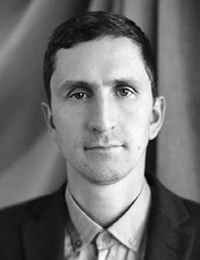BIOMECHANICAL PARAMETERS OF RUNNING TECHNIQUE OF SPRINT ATHLETES-FINALISTS OF WORLD CHAMPIONSHIP
Keywords:
sprint running, sprint running technique, 100 m and 200 m running, spatio-temporal and kinematic characteristics of running, biomechanical parameters of sprint running.Abstract
Objective of the study: to compare the spatio-temporal, kinematic and angular characteristics of the distance running
technique of the strongest 100 and 200 m sprinters in the world.
Methodology of the study. The study analyzed the data of the spatio-temporal, kinematic and angular characteristics
of distance running presented in the IAAF biomechanical report of the men's 100m and 200m finals of the 2017 World Athletics
Championships.
Results of the study. In the middle of a straight line in a 100 m run, the average speed is 11,60±0,06 m/s, in a 200 m
run – 10,31±0,09 m/s. The difference in speed is achieved due to the step rate (4,80±0,08 stride/s and 4,27±0,05 stride/s,
respectively, p≤0,05), because the stride length at both distances is identical and is equal on average to 2,42 m (Table 1). A
high step rate per 100 m is achieved due to the shorter time of the contact time (0,093±0,002 s and 0,103±0,002 s, p≤0,05)
and flight time (0,116 ±0,002 s and 0,132±0,003 s, p≤0,05). When placing the leg on a support, reliably significant differences
(p≤0,05) are observed in the angle of inclination of the body, the angle between the thigh of the swinging leg and the
vertical line. When removing the leg from the support, a reliably significant difference (p≤0,05) is observed in the angle of
inclination of the body and the angle between the lower leg of the supporting leg and the horizontal line.
References
Balandin S.I., Balandina I.Y. Improving tactical skills in training highly qualified runners for 400m distance. Lesgaft National State University of Physical Education, Sport and Health, St. Petersburg. X International Scientific Congress “Sport, People, and Health”, 8-10 December 2021, Saint-Petersburg, Russia. St-Petersburg, 2021. pp. 53-55.
Balandin S.I., Balandina I.Y., Dmitriev I.V., Maslennikov A.V. Comparative analysis of main characteristics of technique of elite hurdlers (men and women). Theory and Practice of Physical Culture. 2021. No.7. pp. 32–35.
Bissas A., Walker J., Tucker C., Paradisis G. (2018) Biomechanical Report for the IAAF World Championships 2017: 100 Metres Men. Birmingham, UK: International Association of Athletics Federations.
Pollitt L., Walker J., Tucker C., Bissas A., (2018) Biomechanical Report for the IAAF World Championships 2017: 200 Metres Men. Birmingham, UK


